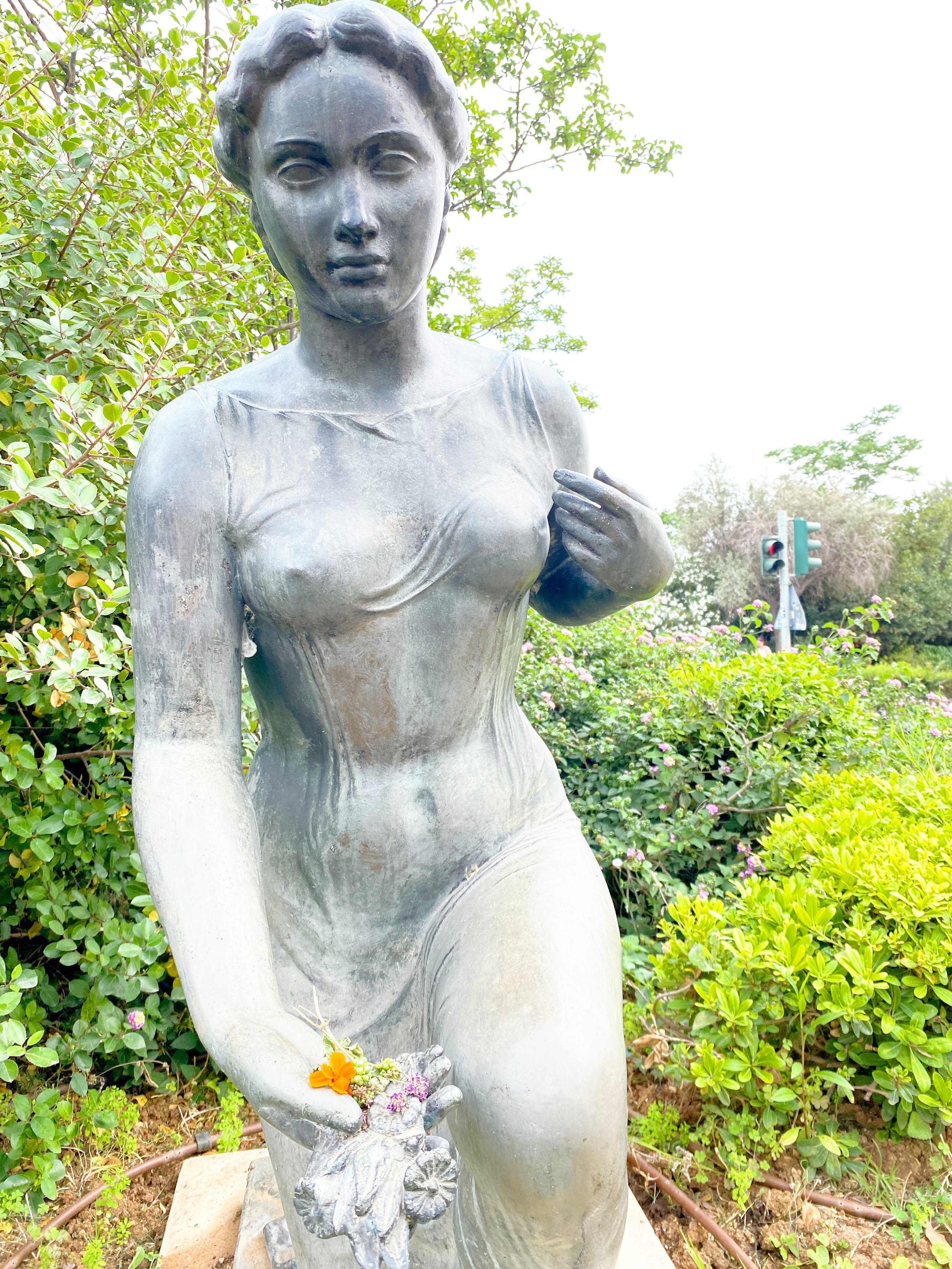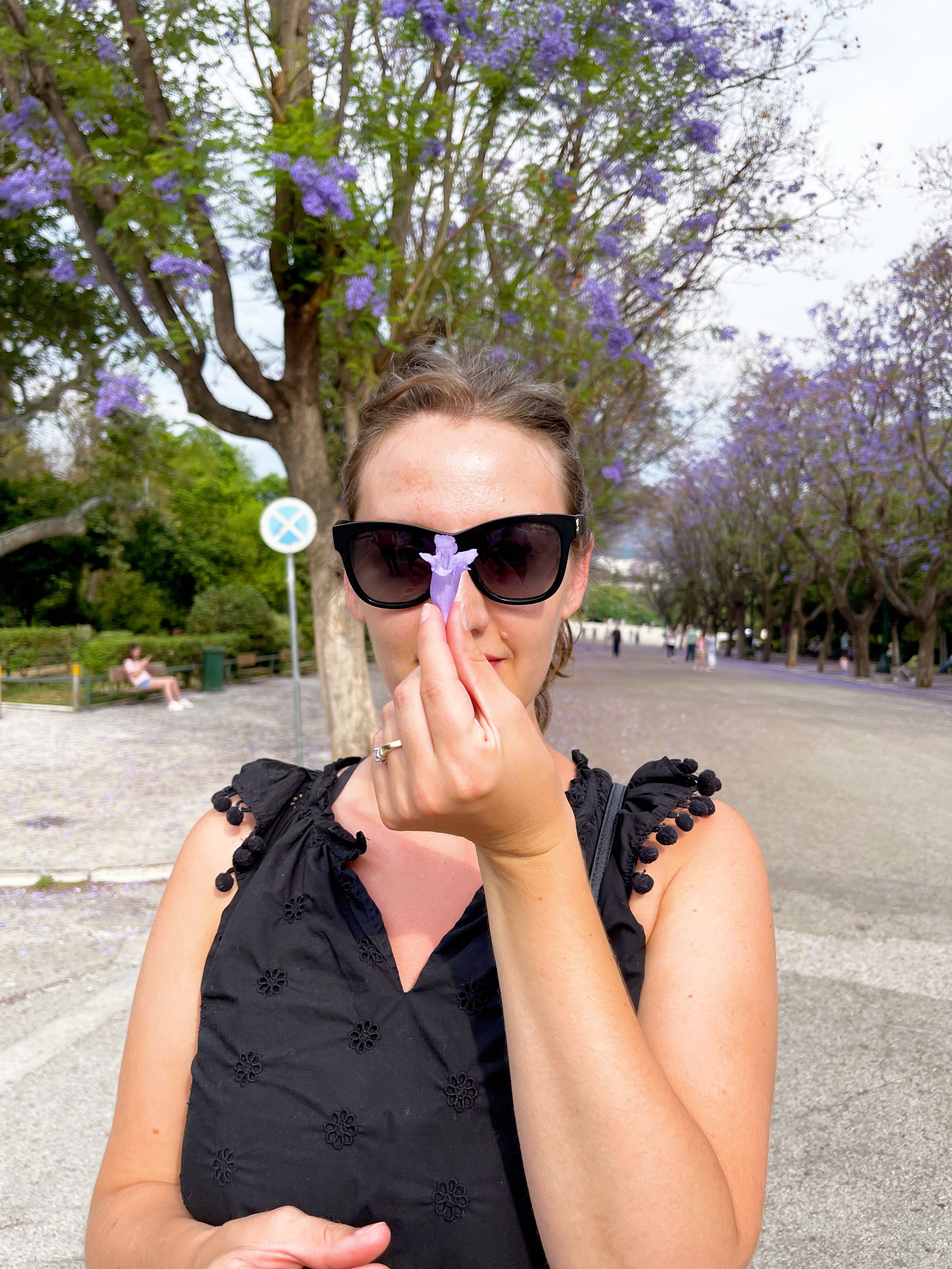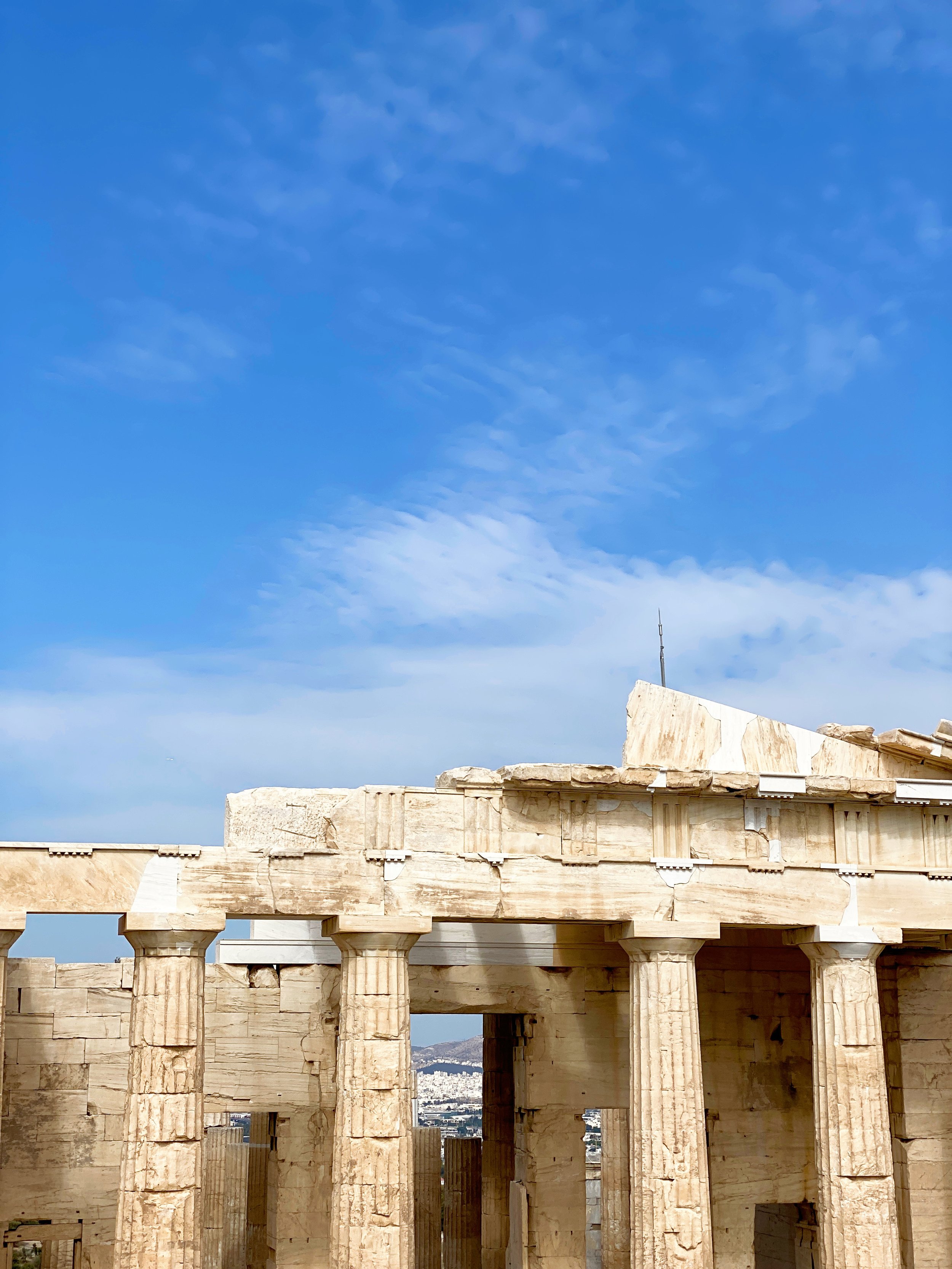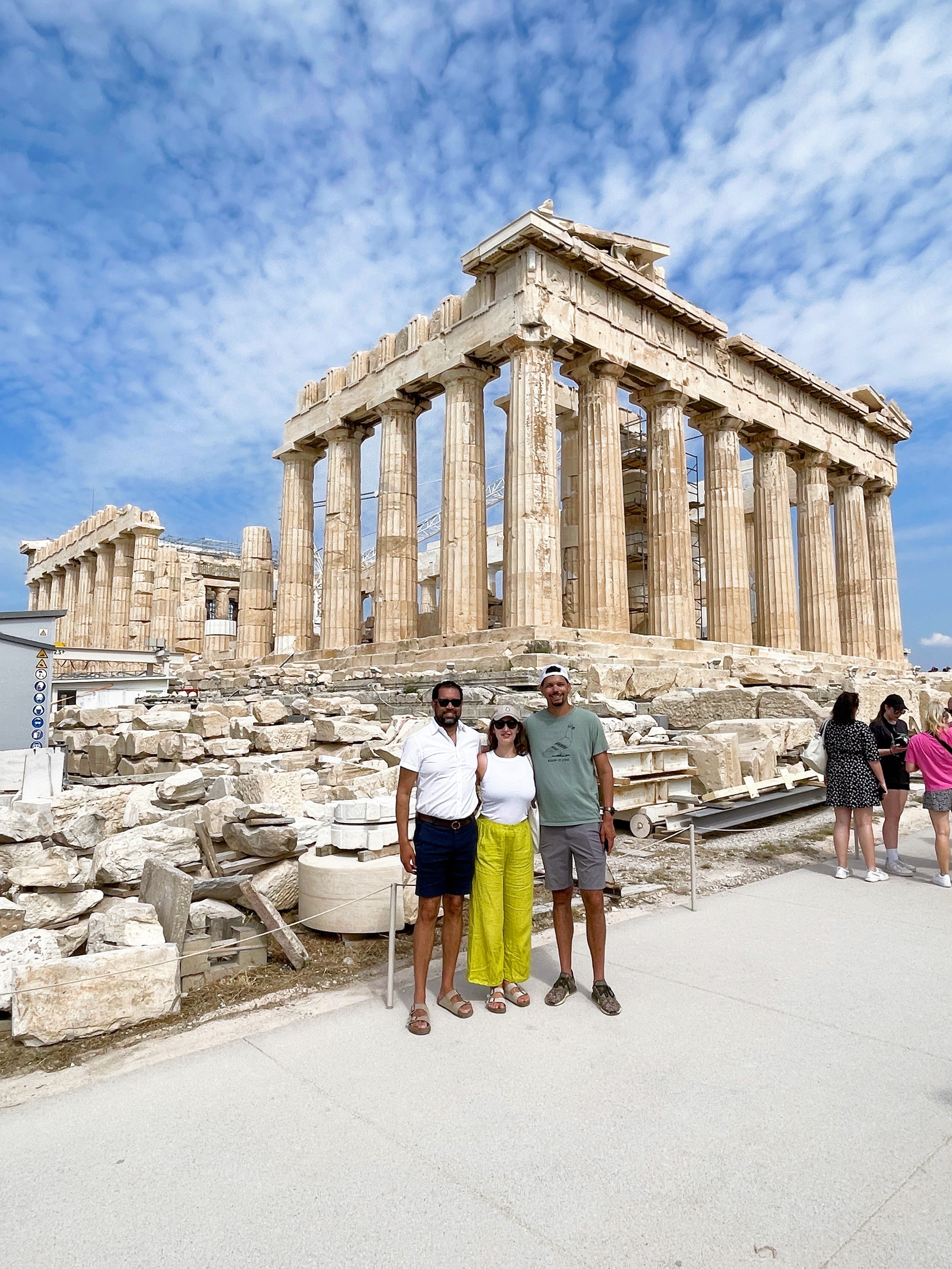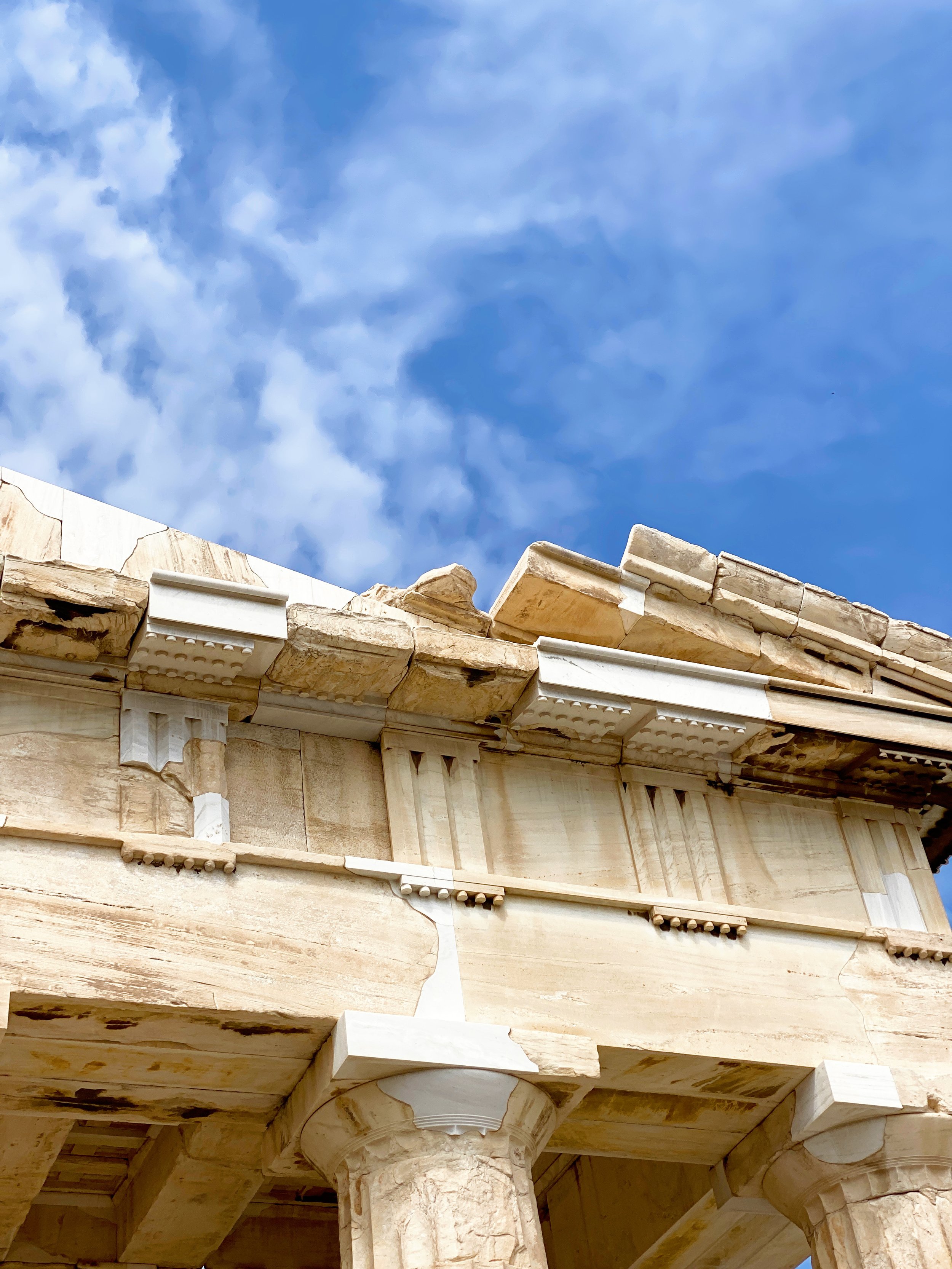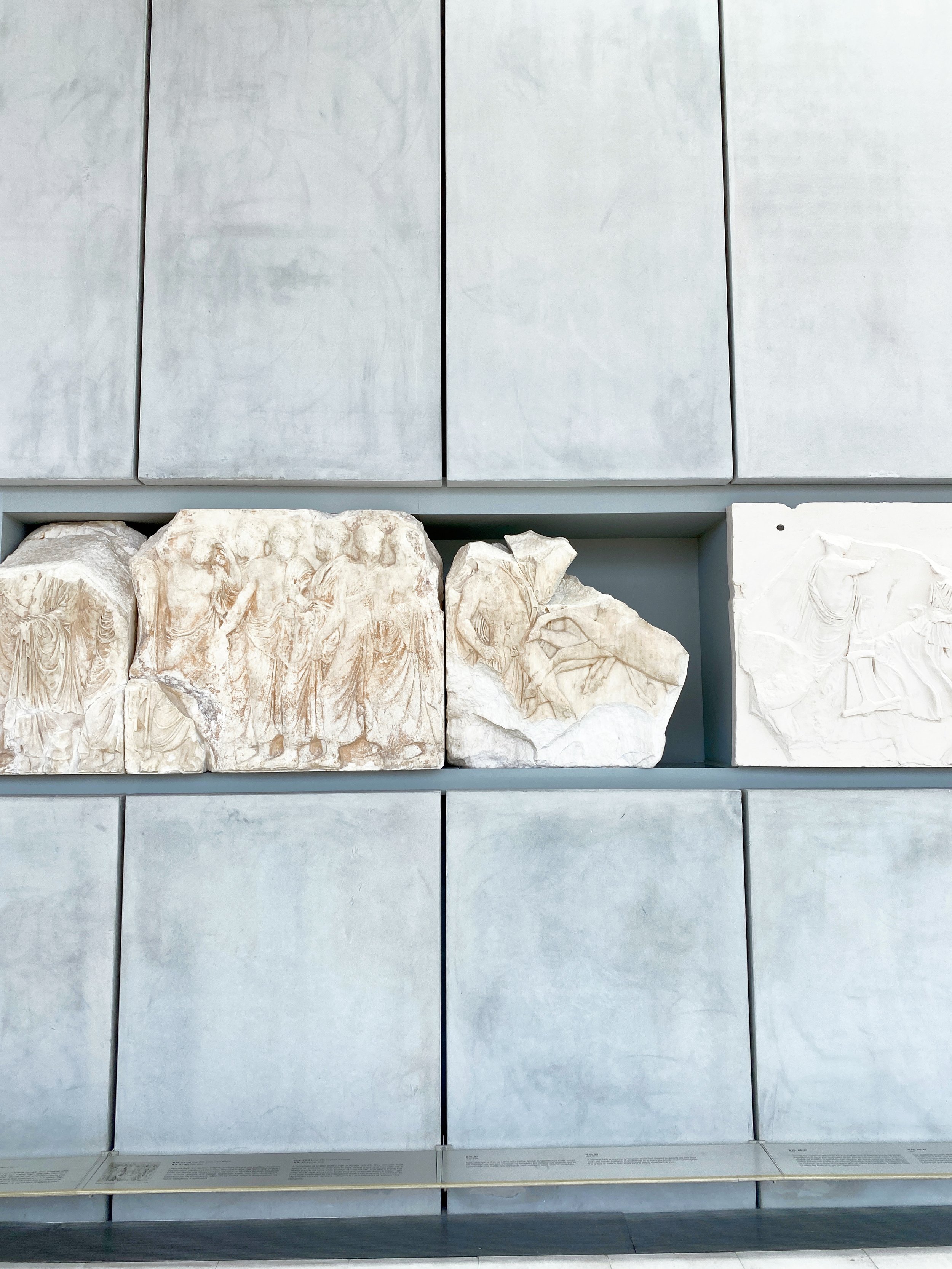36 Hours of Greek Wisdom
ATHENS
Have you ever disliked a city, yet had a marvelous time there? The heat, insufferable; the humidity, relentless; the traffic, assaulting. It is top-to-bottom dirty and yet, just under its dusty surface, is a cultural current that draws you in completely.
For me, this city is Athens.
Athens has a lot going for it, especially if you’re a history buff. It is one of the world’s oldest cities at 3,400 years, it is the birthplace of democracy, it has seen both devastating war and the heights of prosperity.
I was surprised to find that ancient ruins are everywhere throughout the city, from a corinthian column resting in the grass to an underground ancient village made visible through excavation work visitors can peer down into. It gave me the sense that Athens is proud of its lineage and eager for visitors to be also.
Thirty-six hours is a whirlwind—it’s not enough time to discover a city’s truth, intimacies, or humanity—but it was all the time we had, so we made the most of it with our eyes wide open. This guide exists to share how it felt to move so quickly through such a rich place, where to linger and where to keep pace, ultimately, this is a guide to help inform your own first visit to Athens.
Day 1
To arrive in Athens can be inelegant. It is a hectic city and we were swept up quickly without remourse.
We checked in at our hotel, The Social Athens, just off the main shopping drag, nestled into a neighborhood of narrow streets and couture shopping. The extra five minutes of walking from the bustling center to our hotel was well worth it for the relative calm we were afforded.
Athens is grittier and faster than I expected but The Social Athens was a delightful respite to help me feel rested between outings. The rooms are furnished in a contemporary Mediterranean-meets-Scandinavian design — efficient and extremely comfortable — but it’s really the staff who make this place shine. From dinner recommendations to booking us what was quite possibly the last private tour guide in all of Athens, we had a good time because they made sure we did.
Our room number (503) felt like a good omen as it’s the area code of our hometown.
After checking in, we sat down for lunch at their in-house restaurant where the food was hearty and healthy — the perfect fuel before venturing out to explore the city.
Our first stop was the original Olympic Stadium. This is where the first ever international Olympic games of modern history took place in 1896. It is the only stadium in the world built entirely of marble, a feat of construction opulence difficult to imagine until you’re standing in front of it.
On our way there, we stumbled upon the National Garden, commissioned by Queen Amalia and completed in 1840. It reminded me of Central Park (completed in 1856) because it’s a central park and for it’s role as an alternate path through the city that distanced us from the traffic. Winding nature paths led us through bird songs, sporadic ancient ruins, and past an animal sanctuary.
We wandered through the parks, allowing the green spaces to be our guide. This “wonder walk” (as I call them) naturally guided us to Zappeion Hall and its gardens, which are just spectacular. Along the way we encountered precisely choreographed changing of the guard, a beautiful statue erected between two train tracks, and the most purple flowers I’ve ever seen, in full bloom forming acanopy over a wide pedestrian walkway.
This was the scenic route to meet up with our group for happy hour atop the Electra Metropolis Athens hotel, the real appeal of which was our first sighting of the Parthenon. It’s breathtaking during the day, but just wait ‘til you see it at night….
Our hotel recommended we have dinner at Cher Chez La Femme and it did not disappoint. Was the food so amazing because (a) we were ravenously hungry? (b) we were showered with the most joyous hospitality all night long? (c) or was it truly that dang delicious? Answer: all of the above. It was family-style, of tapas proportions, and we weren’t shy about ordering just about everything on the menu. The most surprising dish for me was the ice cream. Their version is both creamier and chewier (if you can imagine that!) and comes drizzled in either rose or sour cherry preserves—order both. We left many hours later, hearts and bellies full.
Day 2
Up and at'em! This was our first and only full day in Athens, and we didn’t want to waste a moment. Today is Acropolis day and the best, most sanity-saving thing we did was book a private tour guide for the excursion.
The Acropolis, in particular the Parthenon, is no joke. We were advised to get there early (they open at 8:00 am), which we did (at 9:00 am), but nevertheless we were packed in like cattle throughout our visit. By the time we descended the steps (around 10:30 am), the incoming group looked truly miserable.
My advice to you, is this:
1. Hire a private guide Tour guides in Athens must attend many years of school and earn a professional certification—and it shows. Our guide, Tina, had answers to our every question and wove it all into mythical stories, historical fact, and—to her humor or ours—”conspiracy theories” (as she called them, but these anecdotes were more like gossip or ghost stories). Besides helping us sort the signal from the noise, Tina gave us a totally customized experience, tailoring the tour as she got to know us over the 5+ hours we spent together.
2. Buy your tickets online in advance This simple act will save precious time as well as the associated anxiety of watching the entrance line fill up while you’re busy fishing out your credit card.
3. Arrive well before opening The Acropolis opens at 8:00, so aim to be there—ticket in hand and guide by your side—by 7:30 am. We heard that the day prior to our visit, the entrance line had run from the gate, down the winding hill, through the parking lot, and a solid “mile” down the road. If I’d encountered that line I’d have said “not worth it!” and gone to lunch. Don’t be this person.
Once we were in, we found the Parthenon crowd toting selfie sticks and tripods, accessories that made the dense trek up the hill even more movement-limited. Once we reached the top of the stairs where the Acropolis comes into full view, space opens up again, but barely.
The extreme crowdedness was distracting from the true greatness I expected to feel, the greatness that matches the historical and democratic legacy of this special place. I wanted to be in awe, to feel the energy emanating from the stone beneath my feet, connected to the politicians and philosophers who’d walked before me. Instead, I worked hard to harness my attention, to tune out the noise and brushes of strangers against my body, to focus on Tina like a drishti.
While I focused on Tina, she focused us on features of the Parthenon that would have otherwise totally escaped my notice. I enjoyed learning that the open-air Parthenon was, only as far back as the 80s, enclosed with a roof, and that current restoration efforts aim to restore it that way. Tina taught us to read the faces of the statues, interpreting their emotional expressions, and to notice the storytelling imagery in the stone reliefs as well as identify which sections are new (white) versus original (tan).
Tina had strong opinions of how the city of Athens manages access to the Parthenon, and after a few hours up there, I do too. As it is managed today, the Parthenon is not a place that welcomes one to linger, ponder, or muse over life’s big questions, as I imagine one must have been able to do back in 406 BCE.
Once we made our way off the Acropolis hill, our guide took us to the Acropolis Museum. This was the first time I’d been professionally guided through one and I’m fully converted to this method. It’s like getting a curated podcast of the experience with only the best stories. I’d normally be mentally drained after a museum of that scale but she kept us focused and energized.
Thank you, Tina!
We bid goodbye to Tina before stopping for lunch at a delicious but nondescript Greek restaurant near the museum. After the Acropolis experience we’d had it didn’t matter much where we went, so long as we were seated, shaded, and fed.
As this was our only full day in Athens, we weren’t nearly done exploring. Our afternoon took us through the Koukaki neighborhood, and the touristy yet vibey, Plaka neighborhood, the latter of which runs nearly parallel to the Acropolis, circling us along its natural curve towards the ancient town center, or Agora. After spotting the Agora from atop the Acropolis earlier in the day, and learning how up close-and-personal we could get to the ruins there, we were pretty motivated to check it out. But by the time we arrived, our feet and patience had had enough and we opted to enjoy it from outside the fence before returning to our hotel for a short rest before dinner.
Our final meal was another feast, this time at Tzitzikas kai Mermigas. Between the six of us, we ordered way too much food, including all our favorites from the last week we knew we wouldn’t taste quite the same back home: fresh fish, lamb meatballs, tzatziki.
It’s not a final vacation night without rooftop cocktails, and in Athens this means dreamy views of the Acropolis. There are many rooftops to choose from, but we ended up at A for Athens, which absolutely fit the bill for reminiscing about our week together before returning to real life in the morning.
While this was a quickie visit, Athens made a big impression. Its legacy of art both performative and visual endures, springing up in unexpected places throughout the city. Athens is gritty, resilient, and wise—so aptly named for the goddess of wisdom, Athena.
🖤


